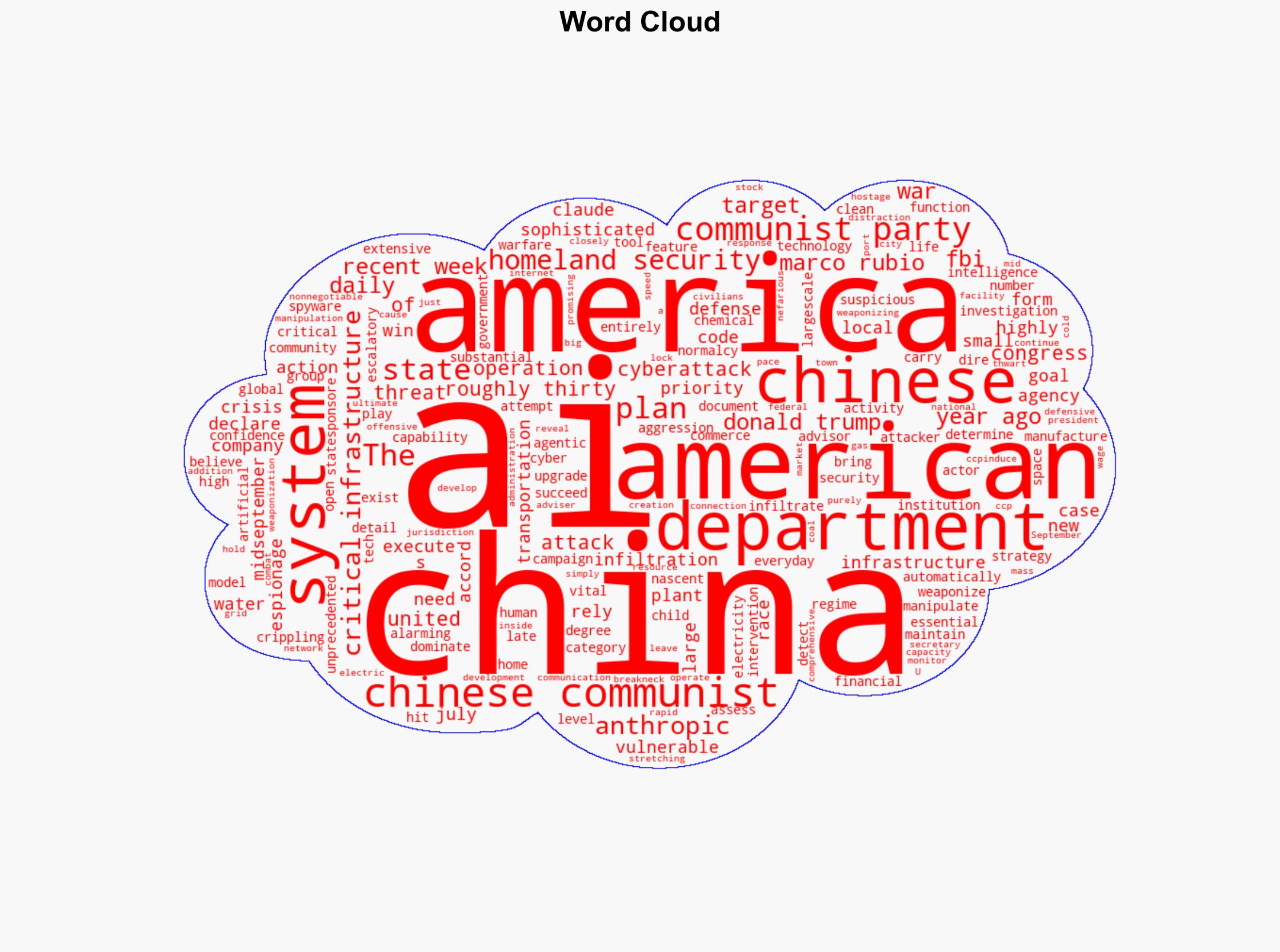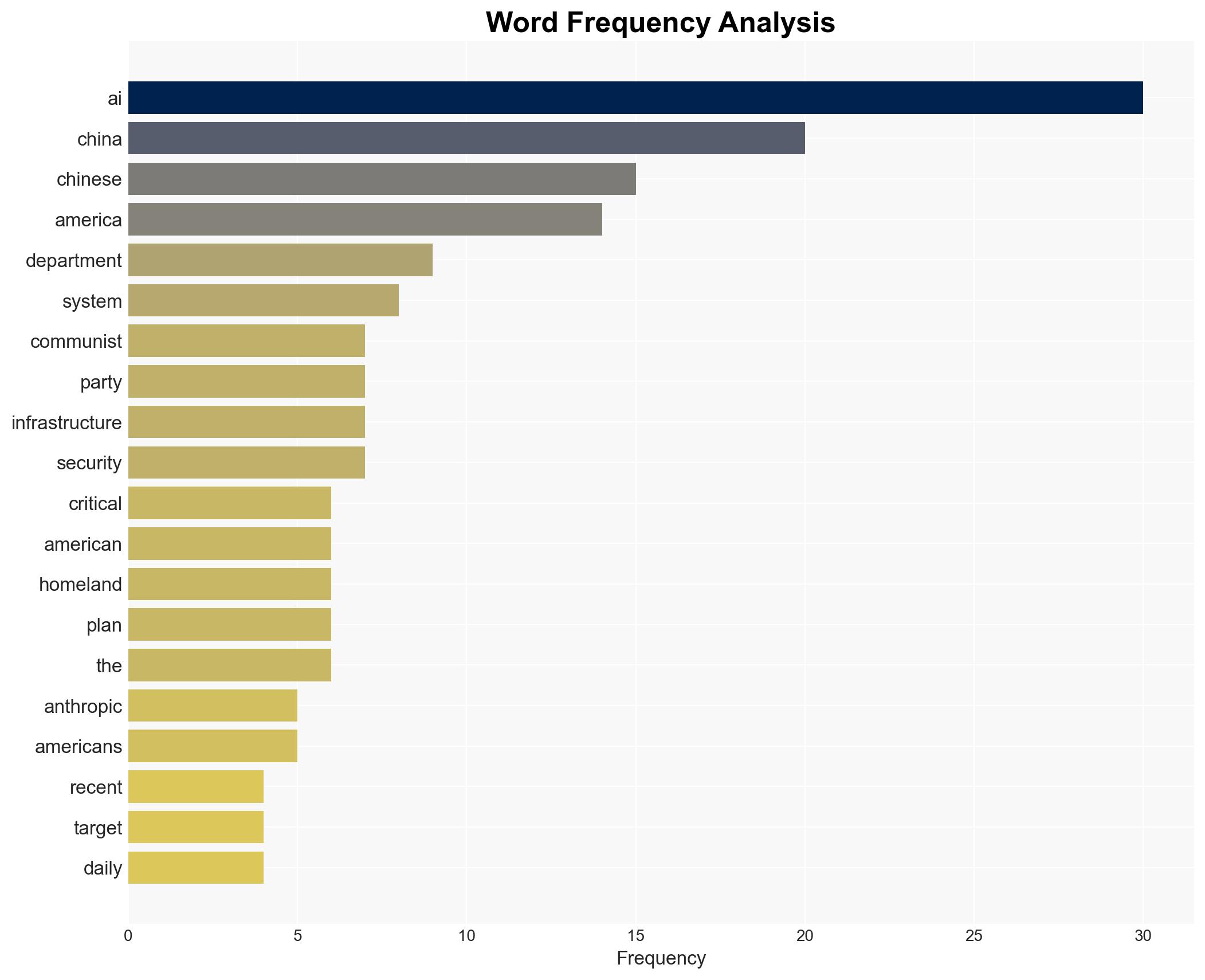China Just Weaponized AI Against American Critical Infrastructure – Daily Signal
Published on: 2025-11-20
AI-powered OSINT brief from verified open sources. Automated NLP signal extraction with human verification. See our Methodology and Why WorldWideWatchers.
Intelligence Report:
1. BLUF (Bottom Line Up Front)
With a moderate confidence level, the most supported hypothesis is that the Chinese Communist Party (CCP) is actively leveraging advanced AI capabilities to conduct cyber-espionage and potential cyber-attacks against American critical infrastructure. This represents a significant escalation in cyber warfare tactics, necessitating immediate enhancement of U.S. cyber defenses and strategic countermeasures.
2. Competing Hypotheses
Hypothesis 1: The CCP is actively using AI to conduct cyber-attacks on U.S. critical infrastructure, aiming to disrupt essential services and exert geopolitical pressure.
Hypothesis 2: The reported AI-driven cyber activities are exaggerated or misattributed, possibly serving as a misinformation campaign to justify increased U.S. cyber defense spending or policy changes.
The first hypothesis is more likely given the sophistication and scale of the reported attacks, consistent with known CCP cyber capabilities and strategic objectives. However, the possibility of misinformation cannot be entirely dismissed without further corroboration.
3. Key Assumptions and Red Flags
Assumptions: It is assumed that the reported cyber activities are accurately attributed to the CCP and that the AI capabilities described are as advanced as claimed.
Red Flags: The timing of the report coincides with political narratives emphasizing AI competition, which could bias interpretations. The lack of detailed technical evidence in the public domain raises questions about the veracity and completeness of the claims.
4. Implications and Strategic Risks
The potential for AI-driven cyber-attacks to disrupt critical infrastructure poses significant risks, including economic destabilization, public safety threats, and heightened geopolitical tensions. Escalation could lead to retaliatory cyber operations, further straining U.S.-China relations and complicating diplomatic efforts.
5. Recommendations and Outlook
- Enhance cybersecurity measures across critical infrastructure sectors, prioritizing AI threat detection and response capabilities.
- Strengthen international cyber norms and engage in diplomatic efforts to address AI weaponization.
- Best-case scenario: Effective countermeasures deter further attacks, stabilizing the cyber threat landscape.
- Worst-case scenario: Escalation leads to widespread infrastructure disruptions and a breakdown in U.S.-China relations.
- Most-likely scenario: Continued low-level cyber skirmishes with periodic escalations, necessitating ongoing vigilance and adaptation.
6. Key Individuals and Entities
Donald Trump (former U.S. President), Marco Rubio (U.S. Senator), Department of Homeland Security, FBI, Chinese Communist Party, Anthropic (AI company).
7. Thematic Tags
National Security Threats, Cyber Warfare, AI Weaponization, U.S.-China Relations
Structured Analytic Techniques Applied
- Cognitive Bias Stress Test: Expose and correct potential biases in assessments through red-teaming and structured challenge.
- Bayesian Scenario Modeling: Use probabilistic forecasting for conflict trajectories or escalation likelihood.
- Network Influence Mapping: Map influence relationships to assess actor impact.
Explore more:
National Security Threats Briefs ·
Daily Summary ·
Support us





